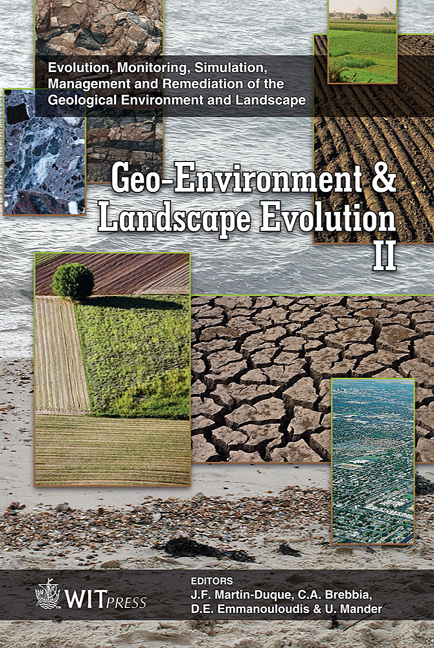Predicting Favourable Areas For Landsliding Through GIS Modelling In Aparados Da Serra (Brazil)
Price
Free (open access)
Transaction
Volume
89
Pages
9
Published
2006
Size
1696 kb
Paper DOI
10.2495/GEO060461
Copyright
WIT Press
Author(s)
A. J. Strieder, S. A. Buffon, T. F. P. de Quadros & H. R. Oliveira
Abstract
This paper presents the results of GIS modelling for predicting areas where natural landslides can occur in the Aparados da Serra region (Southern Brazil). The scarp is mainly developed upon basalts and dacites (Serra Geral Fm.) and sandstones (Botucatu Fm.) of the Paraná Basin. The 1000 m high scarp has been geomorphologically evolving since the break-up of the Gondwana Supercontinent and the opening of the South Atlantic Ocean. Geologic, geomorphologic and geotechnical mapping were conducted in order to acquire field data and to define a conceptual geomorphologic-geotechnical model for GIS data modelling. These mappings were aided with ASTER image processing and aerial photograph analysis. ASTER images do permit a high resolution and accurate DEM. The prediction of areas able to develop natural landslides along the scarp was based upon Factor of Safety (FS) algorithms. The GIS modelling results for Aparados da Serra region were grouped into four categories. The areas with the lowermost FS number were defined as highly susceptible to developing natural landslides. Field investigations upon some existing landslide structures in the region do confirm such predictions. However, large scale FS determination through GIS modelling in order to predict susceptible areas for landslides must be interpreted in a relative manner. FS modelling can, then, be applied to landslide susceptibility mapping in areas of poor historical records, since supported by adequate geological and geotechnical investigations. Keywords: landslides, susceptibility maps, GIS modelling, factor of safety.
Keywords
landslides, susceptibility maps, GIS modelling, factor of safety.





